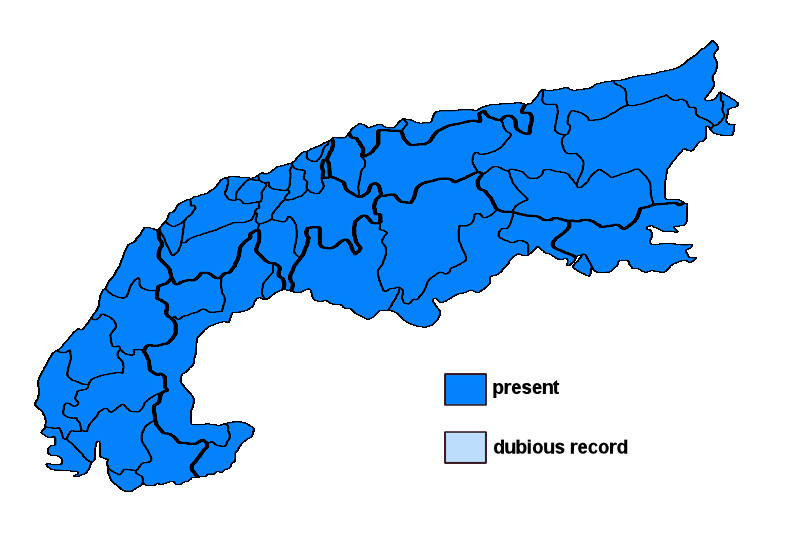Parmelia saxatilis (L.) Ach.
Syn.: Imbricaria saxatilis (L.) Körb., Lichen saxatilis L.
Lichenised.
Substrate: siliceous rocks, bark, lignum, plant debris, ,
Altitudinal range: from the mesomediterranean belt (potential vegetation: evergreen broad-leaved forests dominated by Quercus ilex) to the alpine belt (potential vegetation: treeless Alpine grasslands and tundras, to the lower limit of perennial snow and the equilibrium line of glaciers)
Note: a often collected, mainly saxicolous lichen occurring in large parts of the world, which for centuries has been regarded as a well-delimited species. Recently, however, it has been found that some morphologically deviating specimens may be regarded as distinct species, such as P. ernstiae, P. serrana and P. squarrosa; widespread throughout the Alps.
Austria: Vorarlberg; Tirol; Salzburg; Kärnten; Steiermark; Oberösterreich; Niederösterreich (incl. Wien); Burgenland; Germany: Oberbayern; Schwaben; Switzerland: Appenzell; Bern; Fribourg; Glarus; Graubünden; Luzern; St. Gallen; Schwyz; Ticino; Uri; Unterwalden; Vaud; Valais; France: Alpes-de-Haute-Provence; Haute-Alpes; Alpes-Maritimes; Drôme; Isère; Savoie; Haute-Savoie; Vaucluse; Var; Italy: Friuli; Veneto; Trentino Alto Adige; Lombardia; Piemonte; Valle d'Aosta; Liguria; Slovenia: Alpine and Pre-Alpine Slovenia; Trnovsky Gozd; Liechtenstein





